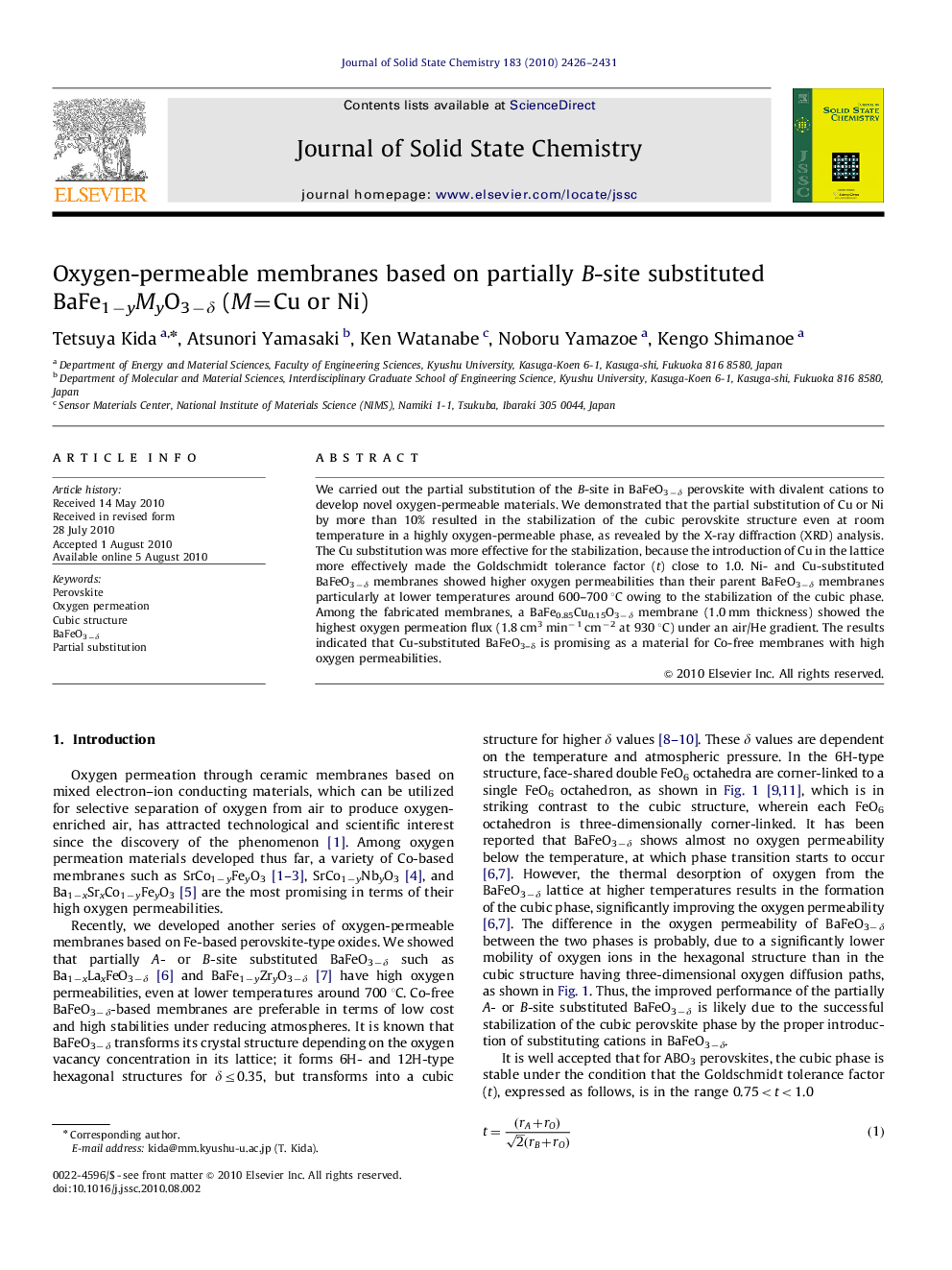| Article ID | Journal | Published Year | Pages | File Type |
|---|---|---|---|---|
| 1332353 | Journal of Solid State Chemistry | 2010 | 6 Pages |
We carried out the partial substitution of the B-site in BaFeO3−δ perovskite with divalent cations to develop novel oxygen-permeable materials. We demonstrated that the partial substitution of Cu or Ni by more than 10% resulted in the stabilization of the cubic perovskite structure even at room temperature in a highly oxygen-permeable phase, as revealed by the X-ray diffraction (XRD) analysis. The Cu substitution was more effective for the stabilization, because the introduction of Cu in the lattice more effectively made the Goldschmidt tolerance factor (t) close to 1.0. Ni- and Cu-substituted BaFeO3−δ membranes showed higher oxygen permeabilities than their parent BaFeO3−δ membranes particularly at lower temperatures around 600–700 °C owing to the stabilization of the cubic phase. Among the fabricated membranes, a BaFe0.85Cu0.15O3−δ membrane (1.0 mm thickness) showed the highest oxygen permeation flux (1.8 cm3 min−1 cm−2 at 930 °C) under an air/He gradient. The results indicated that Cu-substituted BaFeO3–δ is promising as a material for Co-free membranes with high oxygen permeabilities.
Graphical abstractPartially Cu-substituted BaFe1−yCuyO3−δ (y=0.1–0.15) membranes exhibit high oxygen permeation fluxes at intermediate high temperatures (700–930 °C) under an air/He gradient, due to the stabilization of the cubic perovskite phase by the substitution.Figure optionsDownload full-size imageDownload as PowerPoint slide
